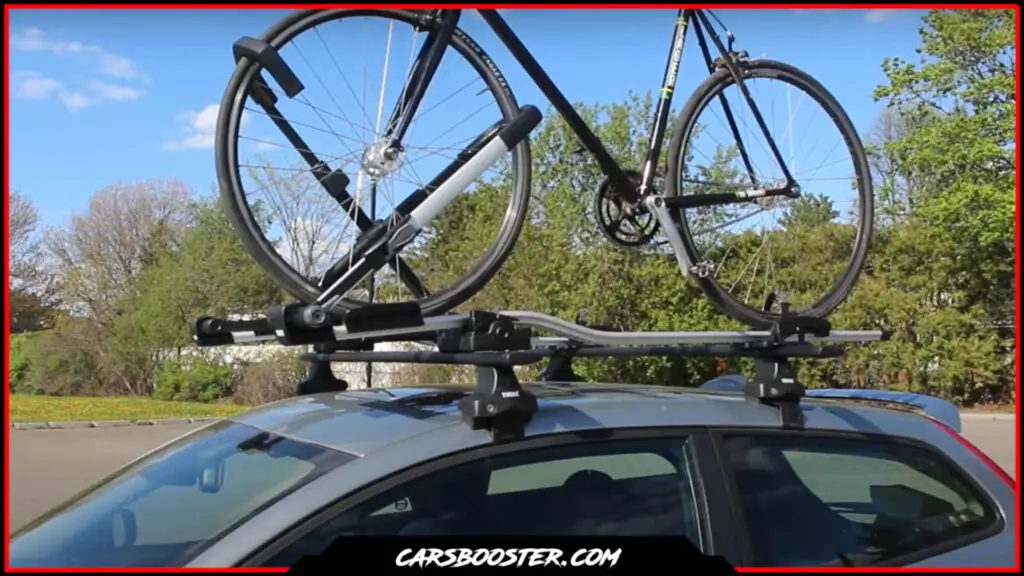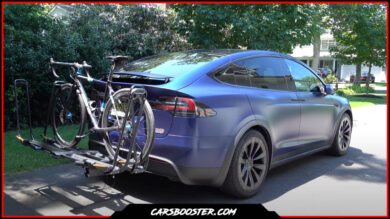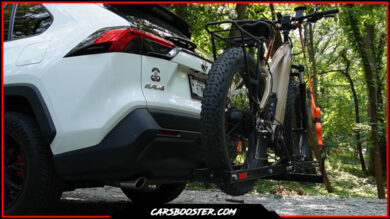
Cycling is an excellent way to improve both physical and mental health. However, finding suitable trails near cities can be challenging. Therefore, many people prefer to drive to bike trails located far from the city. To safely transport bikes, people use either a truck or a bike rack.
However, using bike racks can pose some challenges, including how fast or slow one can drive while carrying a bike rack. This article provides quick answers to the question, “How fast can you drive with a bike rack?”
In short, we believe that the sweet speed spot that you can drive with a bike rack safely is around 70 MPH, however, we should note that each type of rack has a different setup and conditions, which can affect how fast you can drive with a bike rack, we explained it all down below.
Factors That Affect Speed with Bike Racks
The speed at which you can drive with a bike rack depends on several factors such as the weight of the bike rack, where it is fitted, and whether it is fitted correctly.
Additionally, the speed that you can drive depends on the number of bikes loaded and the vehicle model and size. When the bike rack is mounted at the back of the vehicle, it does not slow down the car much. However, racks mounted on the roof tend to slow down the vehicle a little. Similarly, the speed loss is considerably more when the racks have bikes loaded on them.
Speed Limits for Different Types of Bike Racks
Different types of bike racks have varying speed limits depending on their design and capacity. For instance, hitch bike racks come in both platform style and hanging cradle style and are attached as extensions to the rear end of a vehicle.
They can carry up to five bikes, but this makes it harder to drive fast, and they sometimes sway when fully loaded. Therefore, vehicles with hitch bike racks should not exceed a speed of 65 MPH.
On the other hand, trunk bike racks are portable and designed to carry only two to three bikes. Although they are lighter than other options, they still need to be driven at a speed below 55 MPH to prevent the vehicle from slowing down due to additional weight.
Roof racks are another popular option that can carry a good number of bikes without causing much speed loss. However, they can cause wind resistance and noise, limiting the speed to 80 MPH.
Soft racks are usually small and lightweight, and even when loaded up to their maximum capacity, they don’t put too much extra weight on the car. However, when traveling with soft racks, it is best to drive within 80 MPH.
Finally, Thule bike racks are a popular brand that advises its customers not to drive faster than 90 MPH.
Tips for Driving with a Bike Rack
Driving with a bike rack can be challenging, especially for beginners. However, adopting some tips can make the experience smoother.
First, investing in a high-quality bike rack is crucial because it will hold your bikes securely. When traveling long distances, it is better to go for a hitch rack instead of a trunk rack.
Secondly, follow the instructions from the manual and secure the bike rack and bike correctly in the car. Double-check after driving for 10-15 minutes to ensure that no parts are making noise or wobbling.
It’s also important to maintain speed within recommended limits, starting slow and increasing gradually when there is no rattling or suspicious sound.
Safety Precautions for Driving with a Bike Rack
While driving with a bike rack, it is necessary to be cautious and follow safety precautions. For example, it is essential to stay within the speed limit specified for the bike rack, depending on the weight of the load mounted on the bike rack, road conditions, wind conditions, and traffic intensity.
Driving too fast with a bike rack can cause bikes to rattle against each other and even fall off the rack, posing a risk of accidents. It’s also important to avoid excessive traffic and be aware of the increased length and weight of the vehicle when parking.
Taking Your Bike on a Road Trip
Taking your bike on a road trip requires some planning and preparation. If you have a truck or a car with a lot of free space, loading your bike inside the vehicle is a viable option. This way, the weight won’t affect your driving too much, and your bike will be protected from rain, snow, or heat.
However, if this is not an option, you can choose a bike rack that is compatible with both your car and bike. It is essential to follow the instructions in the bike rack manual on how to secure the bike rack and bike correctly to avoid mishaps while driving.
Additionally, it’s important to pack the essentials you need for cyclings, such as a tire pump, oil for the chain, helmets, and gloves.
Legal Considerations for Bike Racks
When driving with a bike rack, there are legal considerations to keep in mind. For example, hitch racks add length to the car, and laws in some places forbid people from attaching anything to the rear axle that exceeds 15 feet.
Additionally, parking rules for vehicles with bike racks require that the vehicle should not be parked somewhere without leaving available roadways for traffic.
Are Bike Racks Safe?
Bike racks are safe when used properly, following instructions precisely, and driving at a moderate speed. It is crucial to ensure that the bike rack and bike are correctly secured to the car to avoid accidents.
It’s also important to maintain the recommended speed limit and be alert and cautious while driving. Proper use and precautions will ensure that your bike and car remain safe and protected during transportation.
Conclusion
In conclusion, driving with a bike rack is challenging, but it’s a safe and convenient way to transport multiple bikes. The speed at which you can drive with a bike rack depends on different factors such as the weight of the bike rack, where it is fitted, and the vehicle model and size.
Different types of bike racks have varying speed limits that need to be followed to ensure safe transportation. Following safety precautions, such as investing in a high-quality bike rack, proper strapping, regular checks, and maintaining speed within recommended limits, are crucial.
Additionally, legal considerations and packing essentials for cycling are equally important. With these tips in mind, you can confidently transport your bike to any location without any mishaps.



